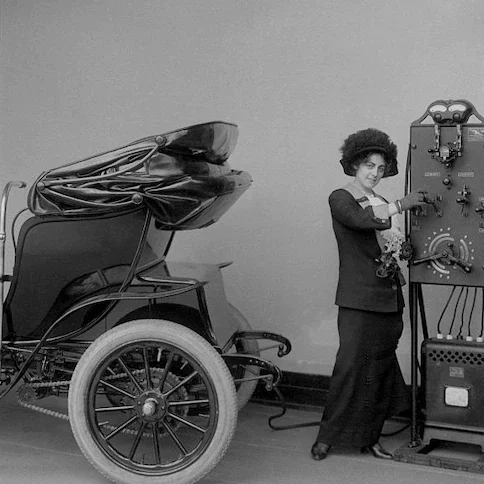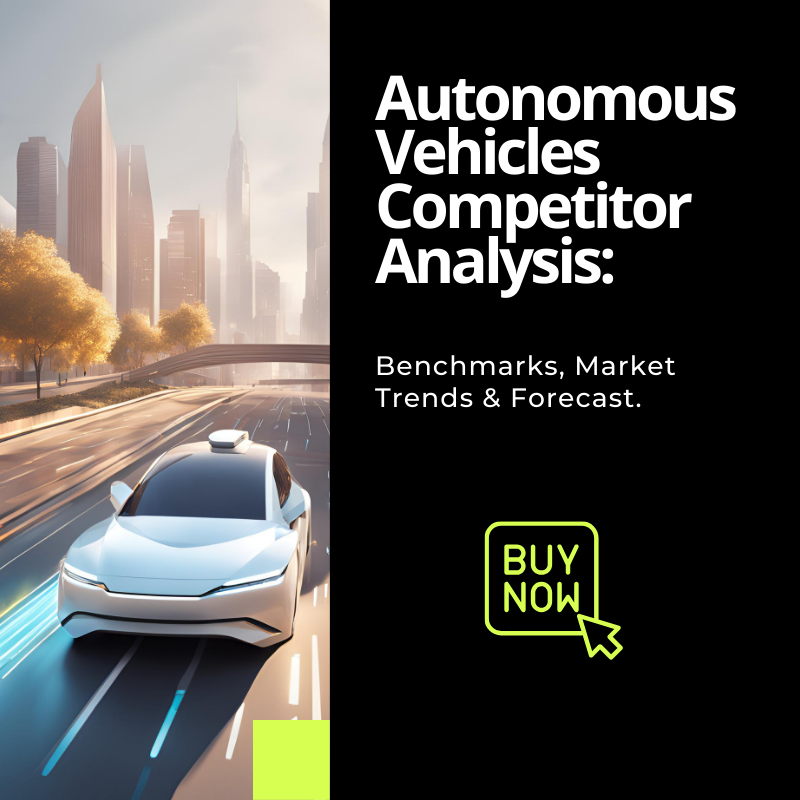Electric cars are moving from niche to mainstream technology in many European markets. But their journey to wider adoption is full of twists and turns that bring to mind the troubled journey of Odyssey’s protagonist back to his homeland Ithaca.
The troubled journey of electric cars to become the future of vehicle propulsion
Many people think that electric cars are a new technology. They might not know that electric cars were already serious contenders for market dominance at the beginning of the 20th century. But the refuelling convenience of internal combustion engines, among other reasons such as range, helped the ICE prevail and still rule as the mainstream choice of powertrain.
1892: Goodbye Horse, Welcome Electric Cars
Around the turn of the 20th century, many people began swapping in their horses and carts for motorized vehicles. Faster and more efficient transport connections between cities increased the demand for rapid mobility of people and goods within them, which required a more convenient transport mode than horse-drawn vehicles. As a result, the automobile rapidly grew in popularity and the battle for the future of mobility commenced. The options? Steam, gasoline, or electric.
From the late 19th century, electric cars began to trickle onto the roads of major American cities, such as Chicago and Boston, representing a formidable part of the automobile trade.
By the early 1900s, there was a fairly even split between the three on American roads: roughly 40% of vehicles were electric-powered, 22% were gasoline-powered vehicles, and in the middle, there was the outgoing technology of steam.
In the early 1900s, electric cars became popular among urban residents.
In comparison to steam and gasoline-powered vehicles, electric cars proved to be a competitive option. Early EVs did not emit any of the unpleasant pollutants, require changing gears or have long startup times.
As a result, electric cars quickly became popular among urban residents where electricity was readily available, and as more people gained access to electricity, the more popular they became.
Women and doctors were the ones who preferred electric cars the most, because they did not emit “dirty exhaust” and were generally considered to be easier to use than gasoline-powered vehicles. Early electric vehicles were relatively light and small by today’s standards, which allowed them to boast an average range of about 90 miles per charge in the 1910s.
A New York Times article from 1911 reported, “The designers of electric passenger car-carrying vehicles have made great advances in the past few years, and these machines have retained all their early popularity and are steadily growing in favour with both men and women”.

Sales of electric vehicles hit their early peak in 1912. Since then, cheap and abundant gasoline and continued improvements to the internal combustion engine hampered demand for alternative fuel vehicles and solidified gasoline vehicles’ dominance.
Why were gasoline cars favored ?
The conventional take is that electric vehicles were more expensive and technically inferior. However, in the early 1900s, the average price of gasoline cars was not below 85% of electric vehicle prices, and ICE technology wasn’t without faults: Gasoline-powered vehicles required a lot of manual effort to drive – changing gears was no easy task and they needed to be started with a hand crank, making them difficult for some to operate.
On the other hand, early electrics were more expensive on average, but that was because electric cars tended to be higher-end models aimed at an affluent segment of the market. Moreover, both improvements in range and battery technology have increased the range of the average electric vehicle from about 50 miles in 1900 to about 90 miles in the 1910s.
However, technology improvements stagnated around the early 1910s. EVs entered their darkest hour when Henry Ford’s mass-produced Model T has entered the automotive market. Introduced in 1908, the Model T made gasoline-powered cars widely available and affordable.
By 1911, the gasoline car costs only $650, while an electric vehicle sold for $1,750.
In 1912, Charles Kettering also invented the first electric automobile starter. By effectively eliminating the hand crank, Kettering’s invention made the gas-powered auto even more attractive to the same drivers who had previously preferred electric vehicles.

Pictured here is one of the gas-stations that popped up across the U.S., making gas readily available for Americans and leading to the rise in popularity of gasoline-powered vehicles
Image Source: “The National Museum of American History”
The slow development of electric infrastructure in the US, ensured the dominance of gasoline cars
New research from Lund University shows that insufficient electricity infrastructure was key in American car manufacturers choosing gasoline cars over electric cars. In their recently released article, Josef Taalbi and Hana Nielsen argue that the slow expansion of electricity infrastructure, that has taken place in the US in the early 1900s, has forced many producers to invest in gasoline-powered instead of electric-powered vehicles.
Even by the early 1930s the vast majority of households in the USA, had no or substandard electricity access; by 1932 only about 10% of rural America was electrified. Limited access to electricity, especially in the suburban and rural areas, has constrained electric vehicle manufacturers to urban areas.
Part of the problem was that the electricity market for households was not profitable for private electricity utilities. A broader political commitment towards a universal electricity grid was first realized in Franklin Roosevelt’s New Deal in the 1930s, but that was decades too late for the electric car.
“It was probably the slow development of electric infrastructure that ensured the dominance of gasoline cars a century ago”, the researchers argued. They modeled what would have happened if electricity grids had expanded 15 or 20 years faster-that is, if either 1917 or 1922 levels of electrification were achieved in 1902. This faster process of electrification would likely have resulted in electric cars becoming the dominant mode of transport, especially in dense urban areas.
Nowadays, Battery Electric Vehicles (BEVs) gain traction, but challenges remain
The most expensive part of an EV is the battery, but costs are coming down rapidly and capacities are increasing. However, according to IEA, the rapid electrification of the transport sector, which currently accounts for around 25% of global greenhouse gas emissions, means there is a need for an immediate expansion of battery manufacturing and related supply chains. It said that for the world to have a pathway to net-zero emissions by 2050, over 6.5 terawatt-hours (TWh) of battery production capacity will be needed by 2030.
The IEA has also highlighted the lack of charging infrastructure as the top barrier regarding EV adoption. Range anxiety, or the fear of running out of power before finding the next charging station, has long been cited as a major barrier to mass EV adoption. But while EV’s range has steadily improved over the years, the anxiety has shifted to the inadequacies of the charging network: China’s EV charging infrastructure is struggling to keep up with the growing demand for NEVs; whereas in Europe and the US a reliable, fast charging network (with over 100 kW) has not yet been specifically promoted.
Lack of availability of appropriate vehicle types, sustainable battery production, raw material availability, innovation on battery chemistry and design, and recycling issues are also highlighted by agencies and companies as persistent obstacles towards EV deployment.
The critical role of EV Charging infrastructure for the Sustainable Transport
From transport systems to power-generation facilities, infrastructure provides the services that enable society to function and economies to thrive. The case of early twentieth-century automobiles teaches us that imposing a technology without creating a robust complementary infrastructure may have social and environmental consequences that are much more far-reaching than making or buying a car.
The future of urban transport will not rely on a single technology but on a diverse mixture of transport systems. Changing over to electric cars looks like a promising step for reducing emissions, but before the mass electrification of cars and decarbonizing the grid, the world will need to reckon with two major trends: the aging population and the increasing motorized mobility demand.
Integrating electrification transition alone in a car-dependent transportation system won’t solve the implications imposed by these trends. In the broader context of the current transitions in the face of climate change, the establishment of a viable, reliable, and sustainable (green) transport infrastructure network is a crucial step for society and industry to break out of fossil-fuel dependence.

